Touchstone athlete Ethan Pringle travels across the world. Norway, China, South Africa, and his home in San Francisco provide great climbing escapes for him. This fall he traveled to one of his old climbing crags to try one of the United States’ hardest routes.
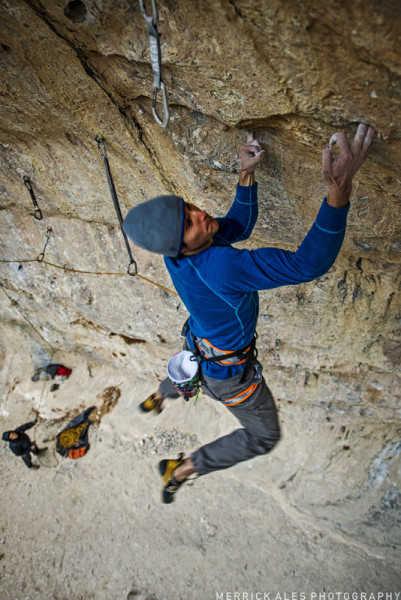
There’s something special these days about having a crag to yourself. When you’re alone at Mt Charleston’s most famous crag, The Hood, just a 45 min drive from downtown Las Vegas, all you hear is the wind blowing through the pine trees, the birds chirping and the occasional tourist on the main hiking trail below – it’s quite refreshing. To be alone at any sport climbing cliff is a rarity now with climbing becoming as popular as it is, and especially so at a steep limestone cliff in prime conditions with hard routes. In the fall, when the temperatures in Vegas fall to the high 70s and the temps at The Hood get perfect, nobody goes. Besides the fact that all the locals are so thrilled that Red Rocks finally isn’t an oven anymore and they can climb there without getting heat stroke, there is another reason Mt. Charleston is no longer a destination for traveling sport climbers: it carries the stigma of having chipped holds, and chipped holds are so 1990s. For me the routes are still fun: they are gymnastic, the moves work one of my biggest weaknesses – shallow pockets – and the scenery is beautiful.
This fall I arrived in Vegas a little later in the season than I’d hoped to. My plan was to go straight to Mt. Clark to keep working on Jumbo Love, but my first couple days at Clark were rough in the freezing shadow of the behemoth Third Tier, and I found the place all too familiar. I was burnt out and I couldn’t stand the sight of anything there: the view of the desert sweeping away to I-15, the uninhabitable base of the cliff, the border town of Prim for gambling junkies who can’t wait the extra 45 minutes to get to Vegas. I couldn’t stand the sight of the solar power plant 10 miles below in its finishing stages of development, with it’s menacing-looking energy- collecting, possibly death-ray-emitting black towers, and of course the cliff itself. Plus I knew in the back of my mind I still wasn’t strong enough to send Jumbo Love, especially without the extra psyche I was hoping to gain from having an enthusiastic partner to work on it with. And alas, no partner materialized to provide that psyche.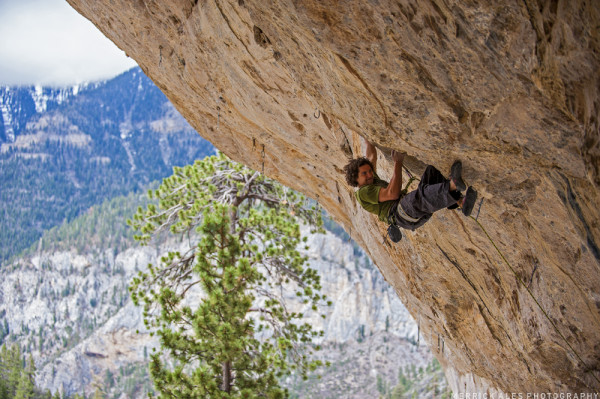
The Hood at Mt. Charleston gave Simon Benkert and my trip to Vegas new meaning. We wanted to climb on fun routes that might be possible to send relatively quickly and we didn’t want to drive up a hellish dirt road, like the one guarding the parking lot to Clark, to get to the crag every day. Plus The Hood is in the sun until the early afternoon, which made warming up pleasant and projecting in the shade doable.
For my project I chose “Hasta La Vista”, a notoriously sandbagged 5.14b/ c bolted and made climbable, very tastefully I might add, by Tony Yaniro around 1995. Hasta is debatably the second hardest route at The Hood behind the Infectious Cave’s 5.14c/d “Ghetto Booty”, but astonishingly Hasta had only seen around 7 ascents total in the 17 years since its FA (Chris Sharma, Jason Campbell, Axel Franco, Francios Le Grand and Liv Sansos in the same day, Dave Graham [?], Shawn Diamond*). A strong and wiry 15-year-old Chris Sharma came to Mt Charleston in 1997 and climbed almost every hard undone line at The Hood in a week or so, including Hasta La Vista, apparently ignoring the pleas of Yaniro to stay off it. Almost every ambitious and strong sport climber in the States, and many from Europe and Asia, came to The Hood to test there mettle and their finger and bicep strength on what at the time were some of the country’s hardest sport routes. I started taking trips to Charleston when I was 12 and spent two days projecting the Compton Cave classic 12d/13a “Straight Outta Compton,” sending it just before we had to leave to drive back to SF. Now I warm up on Straight outta Compton, but I’ve surmised that the beta my 5’5” self had to use to get through the lower crux must have made the route at least 13b.
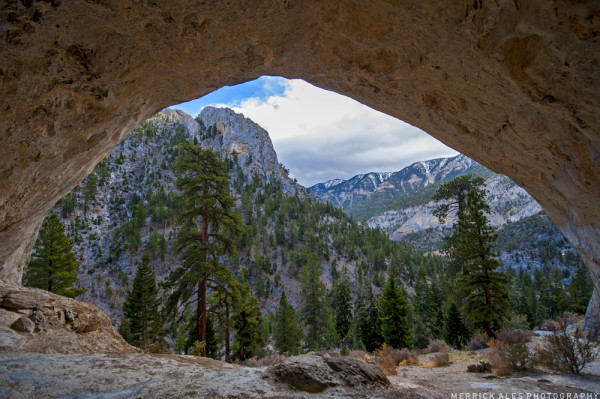
Over the years my parents and eventually older friends would accompany me on trips to Charleston during the summer. I got to meet and climb with some of my climbing heroes there, people I’d only read about in magazines and idolized for their climbing prowess, people such as François Le Grand, Liv Sansos, Beth Rodden, Sonnie Trotter and Joe Brooks. When I was 13 or 14 I watched the French Powerhouse Axel Franco try Hasta twice one afternoon. On his first try he actually climbed through the crux, gaining the first anchors of the route – a route called “Hasta Mañana” and a 14b on its own – and I remember him letting out a huge bellowing scream of satisfaction or dread of what was coming. I wasn’t sure. Unfortunately he fell just a few moves after the anchors of Mañana on that attempt, but sent the route an hour or two later just before dusk. I was awestruck by his performance, and left the cliff feeling more inspired than I ever had been. When I was 13, I climbed my first 5.14a at The Hood – “Soul Train” in the Souls Cave – but after I did it and Stephanie Forte did it, it was downgraded to 13d. I was slightly resentful of the fact my little claim to fame had been taken away, but like one wise old sage climber once said, “changing the grade of a climb doesn’t change the difficulty”. Closing Down became my first “real” 14a the summer I was 15, and I started trying Hasta after that, but realized pretty quickly it was going to take a whole lot of work to send it. Eventually I stopped climbing at Charleston when I got to travel to bigger and better summer destinations like Rifle, Squamish and Ceuse, but The Hood always held a special place in my heart.
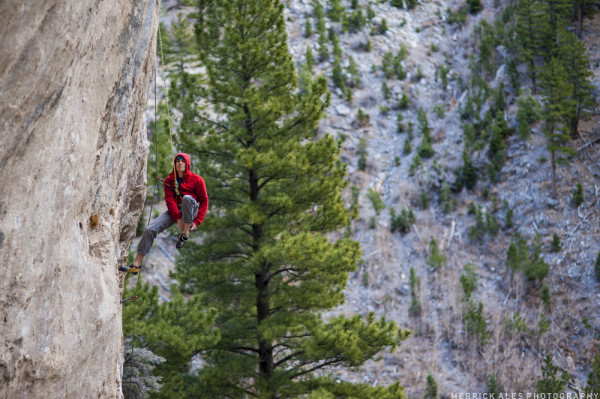
Hasta La Vista shares the start of Closing Down, opening up with some easier but still funky and strenuous 5.13+ climbing to where Hasta splits right. After climbing the initial section of Closing Down, you embark on a technical 20 foot traverse to the right featuring bad smears for feet and big moves between deeper but sharp one-, two- and three-finger pockets. After that traverse section you’ve climbed about 50 feet of sustained pocket pulling and you finally arrive at the route’s first rest. It’s not a great rest, with sharp and awkward juggy pockets way above you and crappy little smears for feet way below you, but it’s just enough to catch your breath and get ready to try hard on the route’s hardest crux another 5- 6 moves ahead. The crux starts when you flip your hand out of a pocket, transitioning the way you hold it from a gundercling (an upside down Gaston) to an undercling. Doing so gives you more height to reach your left hand to the shallow mono pocket which fortunately has some texture to it. If it didn’t you’d slip right out of it’s shallow roundedness. When I was 13 years old and 120 pounds, I didn’t think twice about grabbing shallow one- finger pockets, but now that I’m twice that age and 40 pounds heavier, grabbing holds like that gives me a moment’s pause. The next move is the hardest on the climb, and by that point you’re getting pumped. You tippy- toe the right foothold and make a small leap to a shallow, two-finger side pull pocket with your right hand (see picture). When you swing out it feels like your tendons might explode. Fortunately mine never did. After taking the swing and kicking your feet back on you have to stab your left hand into a good side-pull and hike your feet up high and to the left to oppose it. The next four moves are still hard and quite pumpy – I pumped off them three times before sending the route – but just past them you arrive at the better rest and the holds that mark the anchors of “Hasta Mañana,” the route’s “14b” version. The next thirty feet of climbing that guards the anchors of Hasta La Vista checks in around 13b/c with steeper terrain but much better holds. While not nearly as hard as the previous sections, it’s still hard enough to fall off of if you’re too pumped. And chances are you’ll be at least a little pumped.
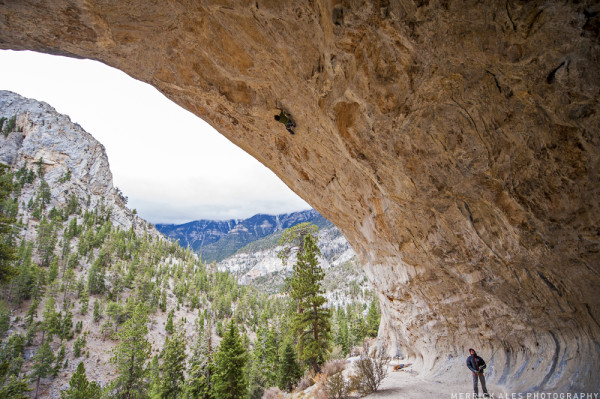
After spending a couple days re-learning the moves on Hasta and linking some small sections on the dog, I felt confident enough to start giving it some red-point attempts. On my first few RP attempts I felt like I had to tense every muscle in my body to keep my feet on the bad smears through the traverse section, but eventually after a few tries I learned them and was able to flow, instead of fight through them to get to the rest. On one very cold and windy day I had a breakthrough attempt where I pulled the crux lunge to the side pulley two finger, only to pump off a couple moves later just before the next rest. We hiked out that day in early November through sleet, and I worried that my weather window for sending Hasta was coming to an end. That day my partner, San Francisco local and Touchstone route setter Simon Benkert, had finished one of his projects in the Compton Cave – a sandbagged 13d called “Free at Last,” so not all was lost for the team. Fortunately the storm that engulfed Mt Charleston for several days lifted and didn’t leave too much snow at The Hood in its wake. The sun came back out and we returned with renewed vigor, knowing that winter may actually arrive in full force any day.
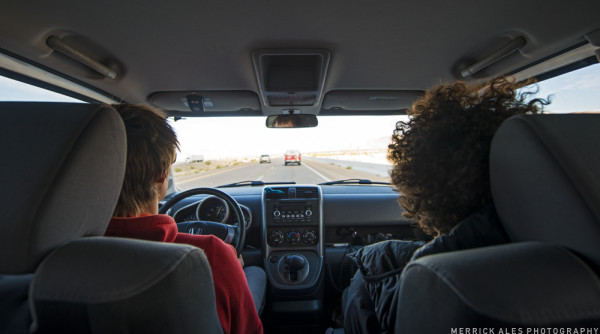
On November 14th, 2012, Simon and I rolled up to perfect, crisp conditions. Some climbers from Canada on a hike to check out The Hood found us warming up in the Compton Cave and we chatted out for a while. They asked if I minded if they watched me try Hasta and I said of course. What I should have said was they could watch only if they encouraged me, because I realized that day that having people watch me in total silence makes me even more nervous. I need some shouts of encouragement, some jokes to be told, some background noise – anything to break up the monotony and seriousness of trying to a hard route with a silent audience. Of course they were just being respectful and probably thought I wanted silence when I climbed. I climbed tense on that try, not able to relax and catch my breath at the rest. I hyperventilated through the crux. I pumped off the wall one move away from the rest at the Hasta Mañana anchors. I was frustrated! But I easily had enough energy and skin left for one more solid attempt. The Canadians departed and I rested a while, trying to stay warm and conserve my energy, but it was starting to get dark. I tried not to think about how badly I wanted to send the route and just get it over with. I tried to distract myself with thoughts of other things and benign conversation with Simon. I tried not to care what happened.
Before leaving the ground on my second attempt, I told Simon he had to encourage me, whether he wanted to or not because usually he is silent as the grave. You’d think after 18 years of climbing I’d have found a mental trick to force myself to stay calm on red-point attempts, but I still get all jittery. I don’t know if it was Simon’s “C’mon dude”s, or just that I felt like I cared less on this attempt since I was tired and didn’t expect as much, but I climbed more relaxed and with more conviction. I was able to recover a little better at the rest before the crux. After sticking the crux move more confidently than ever before, I made the decision to stay calm and just keep climbing no matter what happened. I nearly pumped off again gaining the rest at the Manana anchors. The last move the rest holds involves hiking your feet way high and requires a lot of tension, and I was nearly red lining. It would have been a pretty terrifying fall at that point being about 10 feet run out and only 40 feet off the deck, but I managed to hang in there. At the rest I focused on calming my breathing as much as I could, trying to take big deep breaths into the bottom of my lungs. I put as much weight as I could on the second knuckles of my fingers in the pockets and tried to pull as little as possible. I was pretty worried then that I would blow it on the section getting to the Hasta La Vista anchors, a fear that had been lurking in the back of my mind now for some days, but I reassured myself that I’d made this link more pumped than I was then and that I’d do it again now. After I’d recovered sufficiently at the rest I battled through the pumpy moves to gain one more rest before the final boulder problem guarding the anchors. I took my time at this rest because at this point I REALLY didn’t want to blow it, with only ten more feet of climbing. I busted my way past the finals moves with relative ease this time, and finally, with one last flick of the wrist, clipped the rope through the last draws. Sweet relief swept over me and I let out a few excited screams of joy. “Finally!” was all I could say, though in reality it had only taken me about 7 days. It was a special feeling to complete a route I had first tried over half a decade ago, and one that really hosted my weaknesses, and a route with so much history. “Dude, that was sick!” Simon exclaimed when I landed on the ground. Although Simon had called it quits before my last attempt, now inspired by my send he decided to give Closing Down one last go and got a highpoint on the route. After that we packed up and chugged down the trail as the sky was just getting dark, in our usual fashion – closing down the crag. When we finally reached the parking lot my car was the last one there.

